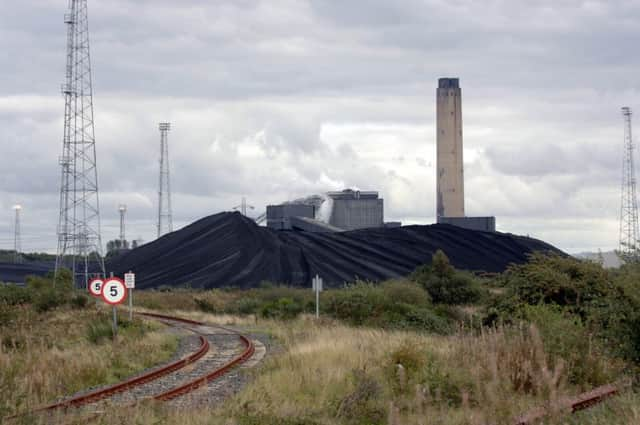Rail challenge posed by Longannet


With the announcement that Longannet power station – the third largest coal-fired station in Europe – is to close in 2016, rail freight in Scotland now faces a major challenge to replace its baseload business. Coal traffic has been in underlying decline for decades, but next year will bring a shock to the system, similar to the 40 per cent loss of Scottish business, which followed the closure of the Ravenscraig steel works in 1992.
Rail freight’s major success story over the past decade and a half in Scotland has been intermodal traffic. Container movements to the five big Deep Sea ports in England have been a rail staple since 1970, with Coatbridge Freightliner Terminal continuing to play an absolutely crucial (but largely unsung) role in Scotland’s export business.
Advertisement
Hide AdAdvertisement
Hide AdThe big positive development has come in the domestic intermodal market, beginning with the 1999 capture of Safeway supermarket traffic from Mossend to Inverness, subsequently complemented by a variety of new flows within Scotland (notably from Grangemouth to Aberdeen for Asda) but predominantly from the West Midlands to the hub railheads in Central Scotland – Coatbridge, Grangemouth and Mossend.
Rail has proved – in conjunction with logistics companies like Malcolm, Russell and Stobart – that it can push out the boundaries. But there are major challenges in expanding this sector, and in some cases even holding on to existing flows may be difficult. On the Perth-Inverness corridor, two thirds of the railway is still single-track, and the Highland Main Line’s (HML) crossing loops are of very variable and generally restricted length. As a result, the daily intermodal service for Stobart and Tesco is limited to 20 containers – yet with consistently longer loops (or ideally double-track throughout), train length could be increased to 28 units. Unfortunately, Network Rail seems to be making painfully slow progress in delivering the Scottish Government’s investment plans for HML enhancement – albeit these are capped at £600 million, compared with a planned £3 billion spend on fully dualling the parallel A9 road.
While there is much more the Scottish Government can do to level the playing field between road and rail, the rail freight sector will have to demonstrate that it can be innovative and imaginative in seeking to improve its offer and develop new markets to replace coal. For example, is there enough existing rail traffic to justify inter-company competition – as opposed to co-operation – on the routes from Central Scotland to Aberdeen and Inverness? An interesting straw in the wind came in the recent report of the Scottish Parliament’s Infrastructure & Capital Investment Inquiry into Freight Transport, which encouraged the Scottish Government to explore the potential for providing more flexibility in its grants regime including “funding for innovative projects such as the purchase of lower [height] wagons” – a Rail Freight Group suggestion for a common-user pool of low-platform container wagons, enabling a wider range of traffics to be carried without prohibitive infrastructure expenditure opening up tunnels and overbridges to accommodate the full range of modern containers up to 9ft 6in high and 8ft 6in (2.6m) wide.
A big disappointment over the past decade has been rail’s complete loss of timber traffic in Scotland, despite an annual harvest of 7m tonnes. Fortunately the Scottish Parliament Inquiry took this on board, recommending that the Scottish Government “explore ways in which it can trial innovative methods of transporting timber by rail”. Another key sector of Scotland’s economy is whisky, and while rail has a healthy share of the finished product exported south – through Coatbridge, Grangemouth and Mossend – it is now more than 20 years since trains regularly carried bulk spirit from Highland distilleries to Central Belt maturation and bottling plants. However, in late 2013 the EU-aided Lifting the Spirit pilot project, led by the HITRANS regional transport partnership, ran regular intermodal trainloads from Elgin to Grangemouth. After some teething troubles, the trial proved to be a success overall, and the possibility of creating a permanent service for a range of food and drink products has been under examination.
More concrete evidence of rail revival came with the recent announcement that PD Ports and DB Schenker are co-operating to introduce a new intermodal service from Teesport to Mossend and Grangemouth – an important extension of rail’s ability to serve the Deep Sea feeder and European markets. But overall it is clear that much more work – and close co-operation between the industry and the Scottish Government – is needed if rail is to meet the challenges posed by loss of coal, and thereby give more markets a resilient alternative to overdependence on road haulage.
• David Spaven is Scottish representative on the Rail Freight Group, www.rfg.org.uk